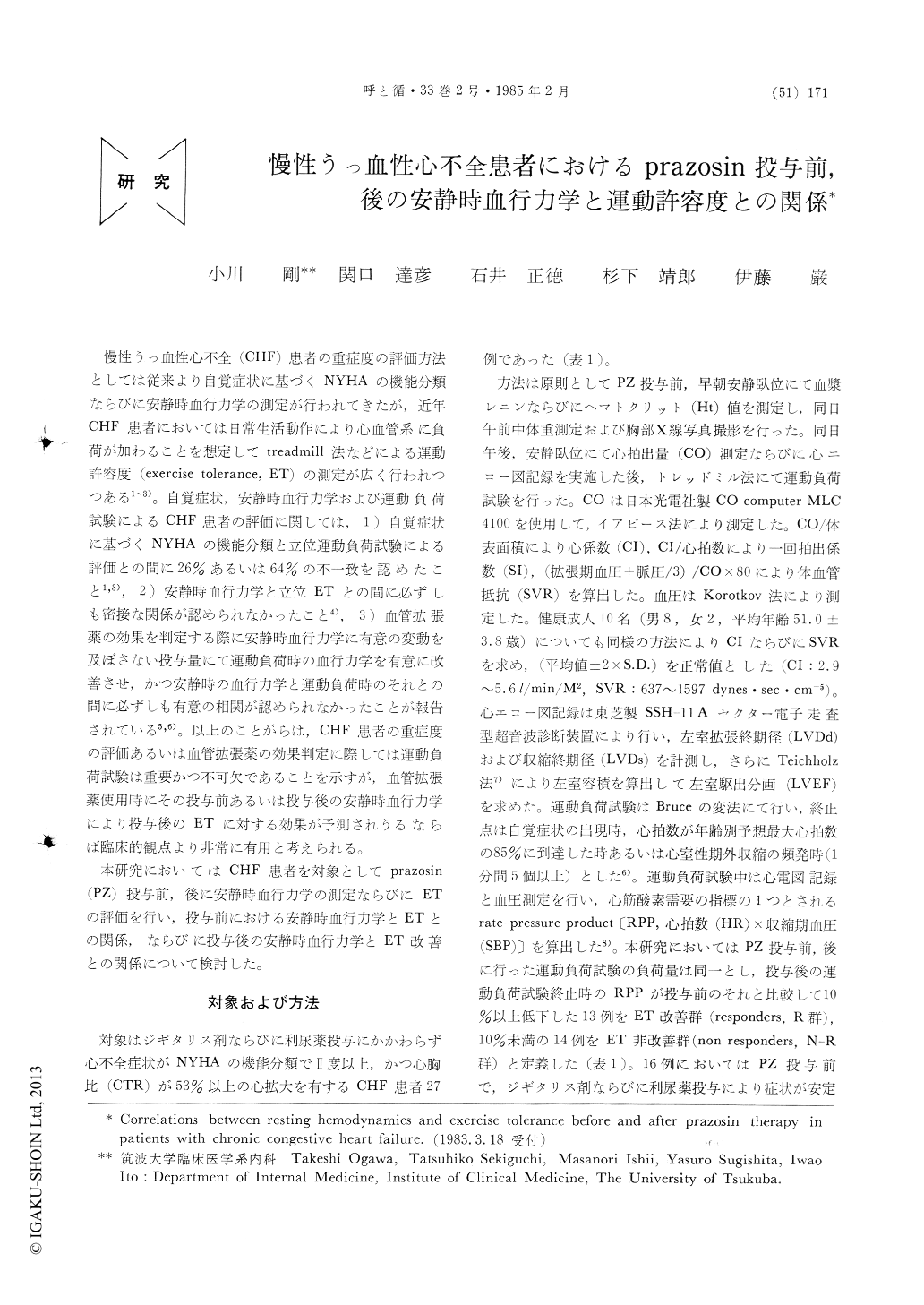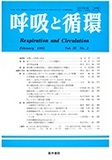Japanese
English
- 有料閲覧
- Abstract 文献概要
- 1ページ目 Look Inside
慢性うっ血性心不全(CHF)患者の重症度の評価方法としては従来より自覚症状に基づくNYHAの機能分類ならびに安静時血行力学の測定が行われてきたが,近年CHF患者においては日常生活動作により心血管系に負荷が加わることを想定してtreadmill法などによる運動許容度(exercise tolerance, ET)の測定が広く行われつつある1〜3)。自覚症状,安静時血行力学および運動負荷試験によるCHF患者の評価に関してば,1)自覚症状に基づくNYHAの機能分類と立位運動負荷試験による評価との間に26%あるいは64%の不一致を認めたこと1,3),2)安静時血行力学と立位ETとの間に必ずしも密接な関係が認められなかったこと4),3)血管拡張薬の効果を判定する際に安静時血行力学に有意の変動を及ぼさない投与量にて運動負荷時の血行力学を有意に改善させ,かつ安静時の血行力学と運動負荷時のそれとの間に必ずしも有意の相関が認められなかったことが報告されている5,6)。以上のことがらは,CHF患者の重症度の評価あるいは血管拡張薬の効果判定に際しては運動負荷試験は重要かつ不可欠であることを示すが,血管拡張薬使用時にその投与前あるいは投与後の安静時血行力学により投与後のETに対する効果が予測されうるならば臨床的観点より非常に有用と考えられる。
Measurements of resting supine hemodynamics and exercise tolerance (ET) using treadmill were made before and after prazosin (PZ) therapy of 2 weeks in 27 patients with chronic congestive heart failure (CHF), to evaluate the effects of PZ on hemodynamics and ET and to analyze their cor-relations. Patients were divided into two groups, responders (R group) who showed a marked im-provement in ET after PZ and non-responders (N-R group) who did not.
Although there was no significant difference in ET between two groups before PZ, cardiac index (CI) was significantly lower (p<0.05) and systemic vascular resistance (SVR) was higher (p<0.05) in R group than in N-R group. Thus, there seems to be no close correlation between resting supine hemodynamics and ET. After PZ, CI was signifi-cantly lower (p<0.05) and SVR was higher, although not statistically significant, in R group than in N-R group. In addition, CI was lower than normal range and SVR showed upper value of normal range in R group. These results indicate that patients with more severe CHF show a marked compensatory increase in SVR and more likely reveal an improvement in ET after PZ, despite lower value for CI.

Copyright © 1985, Igaku-Shoin Ltd. All rights reserved.


